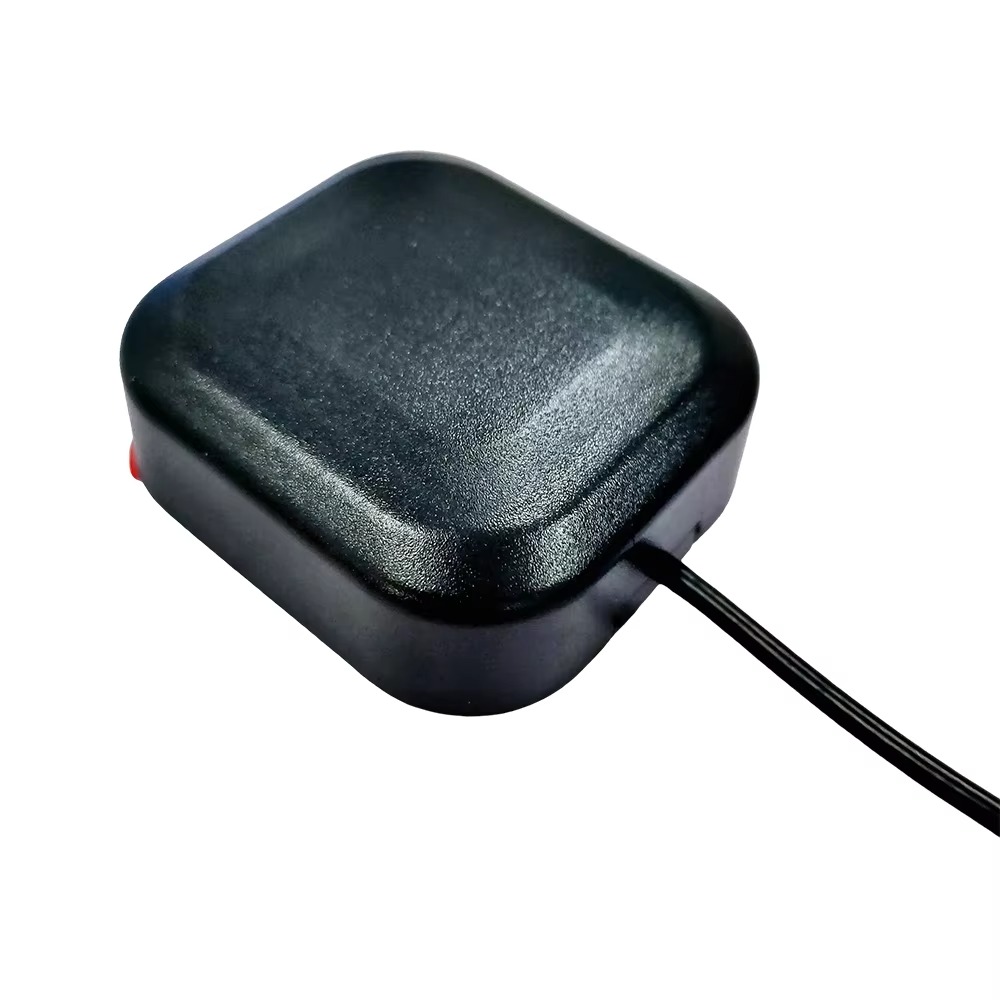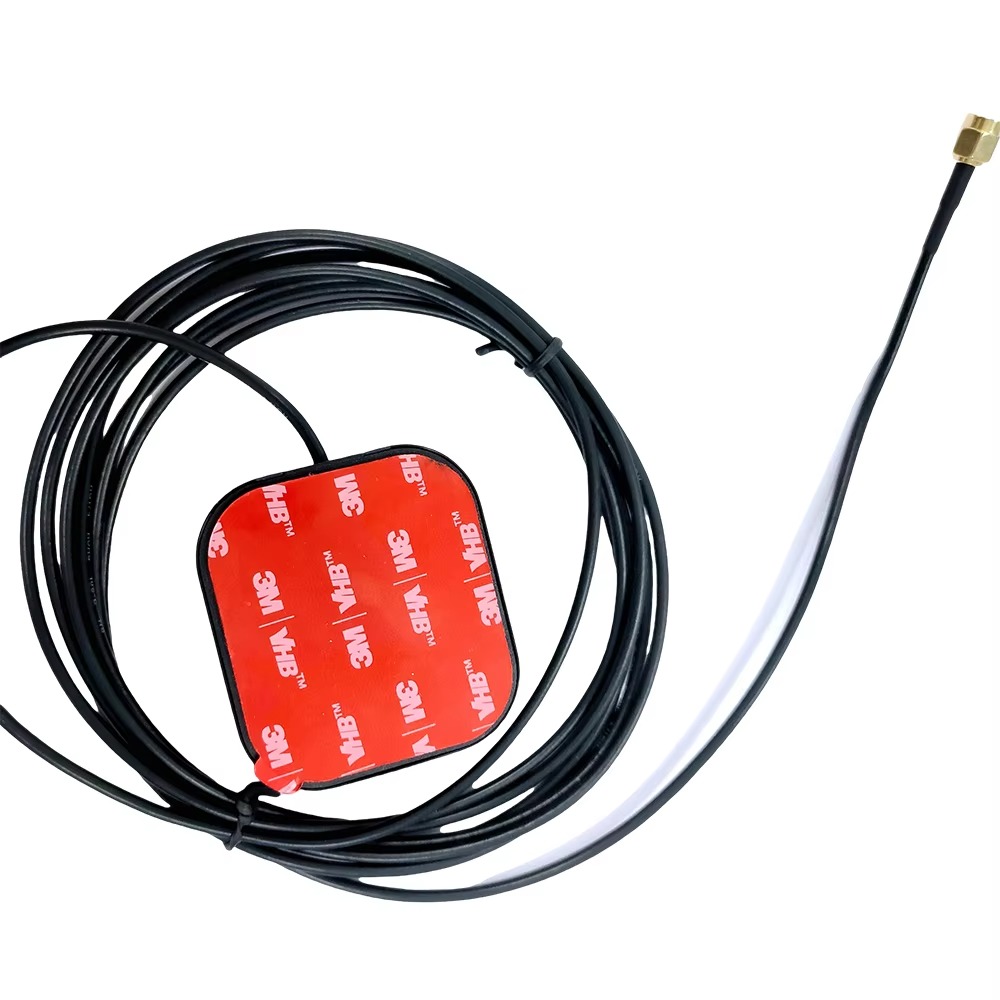Dual band RTK GPS antennas have transcended traditional surveying boundaries, finding applications in diverse industries where precision and real-time data are critical. As satellite technology and signal processing algorithms advance, their role will expand even further—opening new possibilities for efficiency and innovation. This section explores the key applications of dual band RTK GPS antennas today and the future trends shaping their evolution.
Key Applications
1. Civil Engineering and Construction
Civil engineering is one of the largest adopters of dual band RTK GPS antennas, where precision directly impacts project safety and cost. Key uses include:
Site layout: Surveyors use dual band RTK rovers to mark exact locations for foundations, columns, and utility lines—ensuring alignment with architectural plans to within 1–2 cm. This eliminates the need for manual measuring tapes and reduces the risk of misalignment (which can cost tens of thousands of dollars to correct).
Earthwork monitoring: During road or dam construction, dual band RTK systems track the elevation of soil and rock excavations in real time. This allows contractors to verify that the site is graded to the correct slope and depth, preventing over-excavation (which wastes time and materials) or under-excavation (which compromises structural integrity).
Structural deformation monitoring: For bridges, tunnels, and high-rise buildings, dual band RTK antennas are used to detect tiny shifts (as small as 1 mm) in the structure over time. This helps engineers identify potential safety risks (e.g., settlement or cracking) early, before they escalate into major failures.
2. Land Surveying and Mapping
Land surveying relies on dual band RTK GPS antennas to deliver legally defensible positioning data. Applications include:
Property boundary surveying: When delineating property lines (a process that requires absolute precision to avoid legal disputes), dual band RTK systems provide sub-centimeter accuracy. Surveyors can map boundaries quickly, even in remote areas, without setting up multiple control points.
Topographic mapping: Creating detailed topographic maps (used for urban planning, environmental impact assessments, or mining) requires capturing elevation data across large areas. Dual band RTK rovers collect this data efficiently, allowing surveyors to map 10–20 acres per day (compared to 2–3 acres with traditional total stations).
Cadastral surveying: Governments use dual band RTK systems to update land records (cadastres) with accurate coordinates. This ensures that land ownership data is reliable, reducing disputes and streamlining property transactions.
3. Precision Agriculture
The rise of precision agriculture has made dual band RTK GPS antennas a staple on modern farms. Their ability to deliver centimeter-level accuracy enables:
Guided farming machinery: Tractors, harvesters, and planters equipped with dual band RTK antennas follow pre-programmed paths with minimal human intervention. This reduces overlap (when machinery covers the same area twice, wasting seeds or fertilizer) and skips (when areas are missed), improving crop yields by 5–10%.
Variable rate application (VRA): Using data from soil sensors and dual band RTK positioning, farmers apply fertilizers, pesticides, and water only where needed. For example, a field with low nitrogen levels can receive more fertilizer, while a wet area can receive less irrigation. This reduces input costs by 15–20% and minimizes environmental impact.
Yield mapping: During harvest, dual band RTK systems track the location of each load of crops and record yield data. This allows farmers to identify high-performing areas of the field and adjust their practices (e.g., soil amendments) to improve overall productivity.
4. Environmental Science and Monitoring
Dual band RTK GPS antennas play a critical role in studying and protecting the environment. Key applications include:
Landslide and flood monitoring: In areas prone to natural disasters, dual band RTK systems are installed on hillsides or riverbanks to track ground movement. By measuring tiny shifts (as small as 0.5 mm per day), scientists can predict landslides or floods days in advance, giving communities time to evacuate.
Glacier and ice sheet monitoring: In polar regions, dual band RTK antennas mounted on drones or snowmobiles measure the thickness and movement of glaciers. This data helps scientists understand climate change by tracking how glaciers are melting or advancing over time.
Wetland mapping: Wetlands are ecologically sensitive areas that require protection from development. Dual band RTK systems map wetlands with high precision, helping governments and conservation groups identify critical habitats and enforce environmental regulations.
5. Mining and Resource Exploration
Mining operations depend on dual band RTK GPS antennas to maximize efficiency and safety:
Mine site layout: Surveyors use dual band RTK rovers to mark the location of mine shafts, haul roads, and stockpiles. This ensures that the mine is designed to minimize waste and maximize access to mineral resources.
Haul truck navigation: Large haul trucks equipped with dual band RTK antennas follow optimized routes through the mine, reducing fuel consumption and wear on vehicles. Real-time positioning also helps avoid collisions between trucks and other equipment.
Resource estimation: By mapping the location and quantity of minerals extracted from different parts of the mine, dual band RTK systems help geologists estimate remaining resources. This allows mining companies to plan future operations more effectively.
Future Trends
1. Integration with 5G and IoT
The rollout of 5G networks will revolutionize dual band RTK GPS systems by improving the speed and reliability of data transmission between reference stations and rovers. 5G’s low latency (as little as 1 ms) and high bandwidth will allow:
Real-time collaboration: Multiple rovers can share correction data simultaneously, enabling teams of surveyors to work on the same project across large areas (e.g., a 100-acre construction site) without signal delays.
IoT integration: Dual band RTK antennas will be paired with IoT sensors (e.g., temperature, humidity, or vibration sensors) to collect comprehensive data. For example, a bridge monitoring system could combine RTK positioning data with vibration data to detect structural issues more accurately.
2. Miniaturization and Portability
Advancements in materials science and microelectronics will lead to smaller, lighter dual band RTK GPS antennas. Future antennas may be:
Drone-compatible: Tiny, lightweight antennas (weighing less than 50 grams) will be integrated into small drones, allowing for aerial surveying of hard-to-access areas (e.g., mountain slopes or disaster zones) with sub-centimeter accuracy.
Wearable: Surveyors may use wearable antennas (e.g., attached to hard hats or vests) for hands-free operation, improving mobility and reducing fatigue during long field days.
3. AI-Powered Signal Processing
Artificial intelligence (AI) and machine learning (ML) will enhance the performance of dual band RTK GPS antennas by:
Predictive error correction: AI algorithms will analyze historical data (e.g., ionospheric activity, weather patterns) to predict and correct errors before they affect positioning. For example, an AI system could anticipate an ionospheric storm and adjust correction parameters in real time.
Autonomous troubleshooting: ML models will detect signal issues (e.g., multipath interference or EMI) and automatically adjust the antenna’s settings (e.g., changing the radiation pattern or boosting the LNA gain) to resolve the problem—reducing the need for human intervention.
4. Multi-Constellation and Multi-Frequency Expansion
While current dual band RTK antennas support L1/L2 frequencies, future systems will expand to include additional frequencies (e.g., L5 for GPS, E5a/E5b for Galileo) and more satellite constellations (e.g., NavIC from India). This will:
Improve signal availability: More frequencies and constellations mean more satellites are available, even in extreme environments (e.g., dense urban areas or polar regions).
Enhance accuracy: Additional frequencies will allow for more precise error correction, potentially reducing horizontal accuracy to less than 1 cm.
5. Sustainability and Energy Efficiency
As the world focuses on sustainability, future dual band RTK GPS antennas will be designed to be more energy-efficient:
Solar-powered reference stations: Reference stations will use solar panels to generate power, reducing reliance on grid electricity and making them suitable for remote areas.
Low-power components: New LNAs and signal processors will consume less energy, extending the battery life of rovers (from 8 hours to 12+ hours) and reducing the need for frequent recharging.
Conclusion
The dual band RTK GPS antenna has emerged as a transformative technology in the field of surveying, bridging the gap between traditional precision limitations and the demands of modern, high-stakes applications. From civil engineering to precision agriculture, its ability to deliver sub-centimeter accuracy in real time has redefined what is possible—streamlining workflows, reducing costs, and enabling innovations that were once out of reach.
As outlined in this series, the success of dual band RTK GPS antennas stems from a synergy of advanced design, robust construction, and sophisticated working principles. Their broadband radiating elements, weatherproof housings, and RHCP polarization ensure reliable signal reception in harsh conditions, while dual frequency error correction and RTK real-time processing eliminate the largest sources of positioning inaccuracy. These technical strengths translate directly to practical advantages: unmatched precision, improved reliability in challenging environments, and significant time and cost savings for surveyors and project managers.
Of course, the technology is not without its challenges. Higher costs, dependence on reference station infrastructure, and sensitivity to EMI and extreme weather require careful planning and investment. However, these barriers are being addressed by ongoing advancements—from 5G integration and AI-powered signal processing to miniaturization and multi-constellation support. As these trends unfold, dual band RTK GPS antennas will become more accessible, efficient, and versatile, expanding their reach into new industries and applications.
Looking ahead, the role of dual band RTK GPS antennas in shaping the future of surveying cannot be overstated. As global infrastructure grows more complex, environmental monitoring becomes more critical, and precision agriculture scales to feed a growing population, the demand for accurate, real-time positioning data will only increase. Dual band RTK GPS antennas will be at the forefront of this demand, serving as the backbone of modern surveying and enabling solutions to some of the world’s most pressing challenges—from building resilient cities to mitigating the impacts of climate change.
In short, the dual band RTK GPS antenna is more than just a piece of equipment—it is a catalyst for progress. It empowers surveyors to work faster, more accurately, and more sustainably, and it paves the way for a future where precision is not just a goal, but a standard. For anyone involved in surveying or related fields, understanding and leveraging this technology is no longer an option—it is a necessity to stay competitive and drive innovation in the years to come.




































































 Language
Language
 En
En Cn
Cn Korean
Korean

 Home >
Home > 







 18665803017 (Macro)
18665803017 (Macro)













